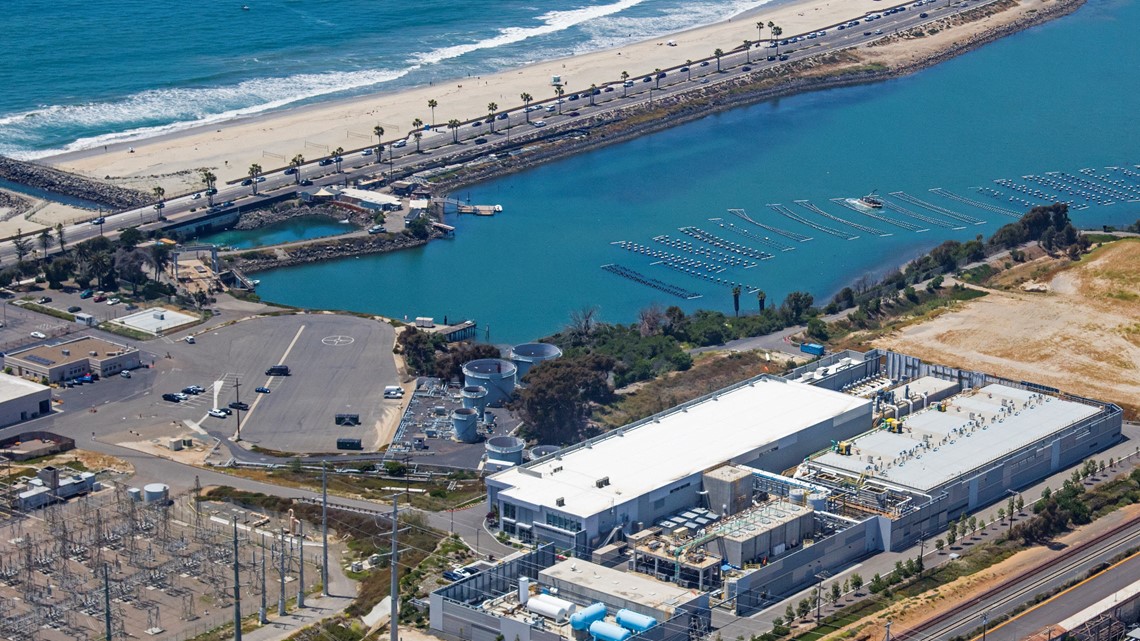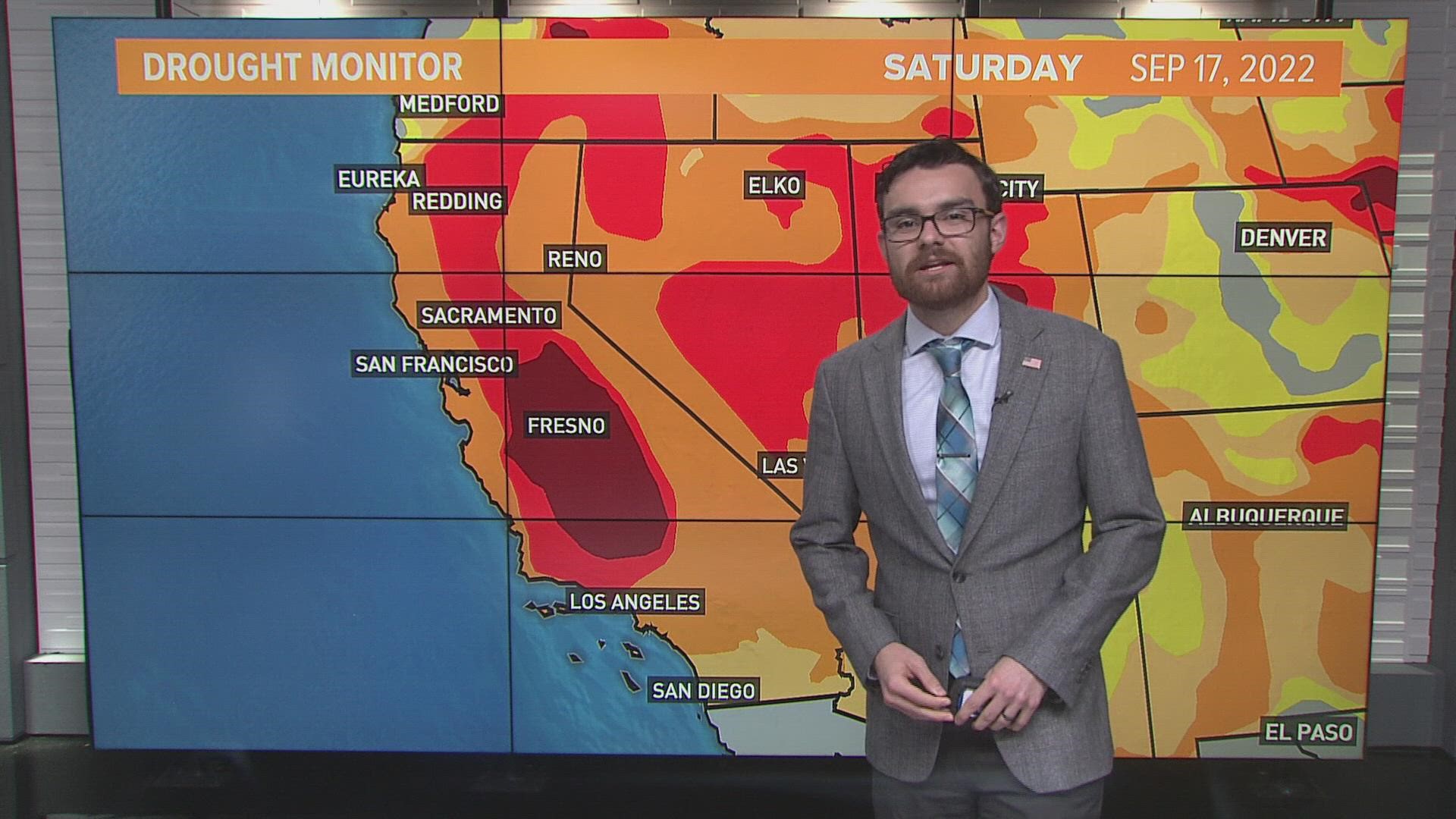SACRAMENTO, Calif. — California's record-breaking summer is coming to an end, but that doesn't mean the heat and drought are over.
A surprisingly robust rain event is forecast for this weekend, but it won't put a dent in the drought. The National Weather Service is forecasting 0.50'-1" of rain in the Sacramento area with the heaviest amounts in the northern Sacramento Valley.
More heat and dry weather is expected after the storm. According to the National Weather Service, this will not be a season-ending event for fire weather but rather a "season slowing" event.
The latest drought monitor doesn't show much change, apart from expanded extreme drought conditions in Contra Costa, Santa Clara, San Joaquin and Stanislaus counties.


Is Desalination the future?
Climate scientists have coined the phrase "hydroclimatic whiplash" to describe California's erratic weather patterns due to climate change. This means that the wetter years will be more wet and, scarily enough, the dry years will even be more dry.
Kris Tjernell, deputy director of the Integrated Watershed Management with the California Department of Water Resources, understands what the state is up against in terms of water.
"The whole game, if you will, is really changing underneath our feet and above our heads, of course," Tjernell said, referring to the effects climate change is having on water supply and weather patterns.
According to Tjernell, desalination is incredibly important in helping future water crises.
Desalination is a controversial topic, due to its environmental impacts, energy use and monetary cost. California currently has 12 desalination plants, but there could be many more in the future. DWR is offering $6 million in financial assistance to support desalination projects that will help develop new sources of local water supplies in California, according to a news release from DWR.
While desalination is a complex process, Tjernell described it as "simply the removal of salts and other impurities from water, such that it becomes available for drinking water, agricultural irrigation and other potential uses."
The Carlsbad Desalination Plant, the largest such plant in the Western Hemisphere, is operated by Poseidon Water and provides San Diego County with 50 million gallons of water daily.
Jessica Jones, Poseidon Water's communication director, said desalination is the only climate resilient water source available. The largest body of water in the world, the Pacific Ocean, is right in California's backyard.
"It is imperative to diversify your water supply, just like you would diversify your stock portfolio, because in times of drought, we have a strain on imported supplies, you need to look locally to a local supply that is climate resilient," Jones said.


Carlsbad brings in 100 million gallons of seawater a day, filtering half using reverse osmosis technology and redirecting half back to the ocean with double the salt content, according to Jones.
"We dispersed that water with extra seawater before it goes out so that we have no negative impacts to the environment," said Jones.
As for the taste, the reverse osmosis process purifies and removes minerals from sea water so efficiently that plants have to add minerals back into the water so it tastes like normal drinking water.
Desalination is a very energy intensive process and can be quite expensive, but as climate change continues to impact the state and water becomes more scarce, the prospect of supplying communities with water via desalination is encouraging.
WATCH ALSO:



















